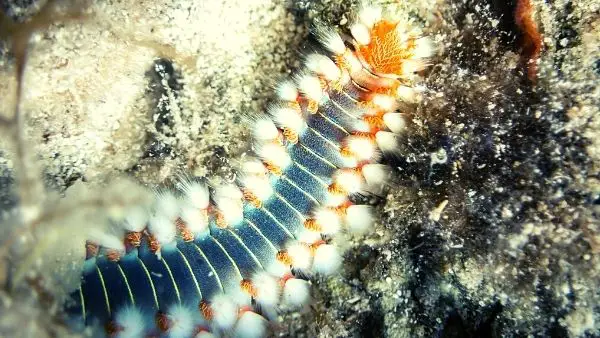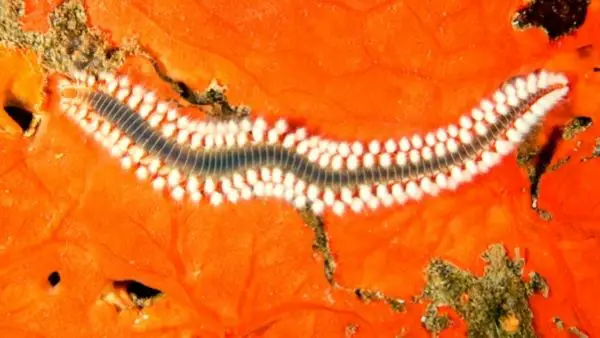When it comes to unexpected critters appearing within your community it's usually a coin toss as to whether they will bring benefit to your tank or bring problems.
One thing you must always do if you see an unexpected guest in your aquarium is identify the creature first. Once you have done that you can then either leave them in your tank to do work such as eat unwanted algae or bacteria, or remove them if they are problem causers.
Bristle Worms are an extremely common find within established reef tanks, it is sort of an inevitability that you will discover them at least once in your hobbyist journey. Most Bristle Worms you will find are harmless and may even bring some benefit to your tank. However, Fireworms are a totally different story.

Fortunately, they are easily identified hitchhikers by their red color and fluffy bristles running along their long bodies. Fireworms hunt mollusks, crustaceans, corals, and invertebrates, and even some of the larger Fireworms have been known to hunt small fish too.
Identifying The Fireworm
Fireworms are pretty big as far as the species goes, growing to around 9.5 inches in length (24 cm). They tend to go unseen until they reach a large length and cause enough noticeable damage.
Once you have identified one in your tank, you must remove it as soon as possible due to their damaging nature. You can achieve this by simply using a set of tweezers, or you can set a trap for them - do not try and remove them with your hands, they have lots of spikes that will almost certainly penetrate your skin and leave you with serious discomfort.
Some hobbyists have claimed that a bristle worm has eaten one of their fish, however, the likelihood is that the fish was either very poorly or already dead. If you see a fish being snapped up by one, it would typically be a Bobbit Worm, or an incredibly big and aggressive Fire Worm. If you have a Clam in your tank, you must immediately remove any Bristle Worms as they can cause irritation which will then lead to the clams closing up.
Population Control
If you do not mind them living amongst your community, without them causing damage to your aquarium life, you probably want to control the numbers as they will breed excessively.
Stop Overfeeding Your Tank
It is fairly simple, the more food that is available, the faster they will reproduce, the best thing to do is just simply cut back on food availability.
Set Up A Trap
Manually removing them with tweezers or a trap is strongly advised if you encounter a Fire Worm. There are many traps that you can find and purchase online or in-store specifically for critter control. If you are feeling creative and would like to make your own trap, there are many different tutorials and similar videos on YouTube.
Introduce Predator Fish
Another brilliant option is to introduce a predator to your tank, there are many different species that will hunt and kill all Bristle Worm species. However, you should always check to see if the rest of your already established tank is compatible with the predator fish.
There are many different predators that will make light work of these Fireworms, they are:
- Six Line Wrasses and Sunset Wrasses.
- Arrow Crabs; however, they are not considered to be reef safe.
- Dottybacks are a good option too, although they can become tank bullies and terrors, to learn more about them check out our guide.
- Hawkfish are also a good option; however, just like the Dottybacks, they can be very aggressive, and you could see some smaller fish and shrimps be eaten as well as your Fire Worms.

Some of the species mentioned above are not considered to be reef safe, proper research and consideration should be made before introducing any new fish or critter to your tank.
Many consider using a predator fish to remove a critter infestation should be your last resort as when the critters are gone, they will need to be continuously fed with similar foods, resulting in many people removing them and rehousing them, which is never an ideal situation for a fish.
Conclusion
These critters may look pretty awesome, but their behavior certainly suggests otherwise. Our recommendation would be that if you discover one, remove it as soon as possible using the most humane and unchaotic ways as possible, that way you will have removed the issue and not disturbed the peace in the tank.
Fire Worms unfortunately offer extraordinarily little benefit and a lot more negatives to your community, and it is much better for everybody involved if you dispose of the these efficiently and quickly. There have been many nightmare stories regarding these worms taking over a whole tank and causing total chaos - don't let that be you!
